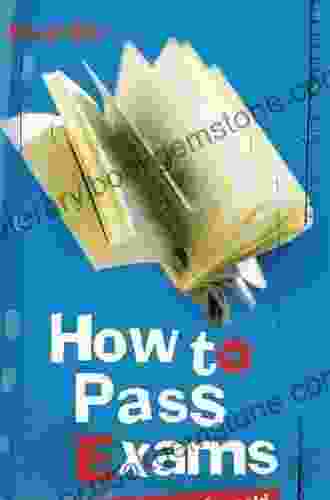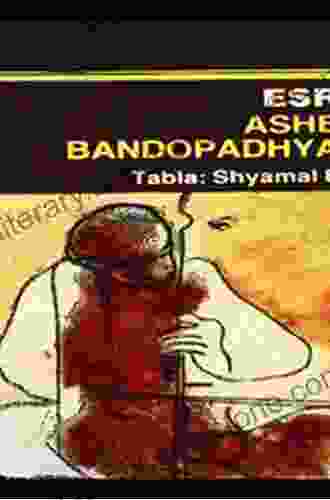An Introductory Guide to Anatomy and Physiology

Anatomy and physiology are two closely related scientific disciplines that study the structure and function of the human body. Anatomy focuses on the physical structure of the body, while physiology examines how these structures work together to maintain life.
4.7 out of 5
| Language | : | English |
| File size | : | 26281 KB |
| Text-to-Speech | : | Enabled |
| Screen Reader | : | Supported |
| Enhanced typesetting | : | Enabled |
| Print length | : | 432 pages |
This guide provides a comprehensive overview of anatomy and physiology, covering the major organ systems, cells, and tissues of the human body. It is a valuable resource for students, healthcare professionals, and anyone else who is interested in learning more about human biology.
Major Organ Systems of the Human Body
The human body is composed of 11 major organ systems, each of which performs a specific set of functions.
- Integumentary system: The integumentary system consists of the skin, hair, nails, and sweat glands. It protects the body from environmental hazards and regulates body temperature.
- Skeletal system: The skeletal system is made up of bones, cartilage, and joints. It provides support and protection for the body and facilitates movement.
- Muscular system: The muscular system consists of muscles, tendons, and ligaments. It allows the body to move, maintain posture, and generate heat.
- Nervous system: The nervous system is composed of the brain, spinal cord, and nerves. It controls all aspects of the body's function, from movement to thought.
- Endocrine system: The endocrine system consists of glands that secrete hormones. Hormones regulate a wide range of bodily functions, including metabolism, growth, and reproduction.
- Cardiovascular system: The cardiovascular system is made up of the heart, blood vessels, and blood. It pumps blood throughout the body, delivering oxygen and nutrients to cells and removing waste products.
- Lymphatic system: The lymphatic system is a network of vessels and nodes that transport lymph, a fluid that contains white blood cells that fight infection.
- Respiratory system: The respiratory system consists of the lungs, airways, and diaphragm. It allows the body to breathe, taking in oxygen and expelling carbon dioxide.
- Digestive system: The digestive system consists of the mouth, esophagus, stomach, small intestine, large intestine, and rectum. It breaks down food into nutrients that the body can use.
- Urinary system: The urinary system is composed of the kidneys, ureters, bladder, and urethra. It filters waste products from the blood and excretes them as urine.
- Reproductive system: The reproductive system consists of the ovaries, fallopian tubes, uterus, and vagina in females, and the testes, epididymis, vas deferens, and penis in males. It allows for the production and fertilization of eggs.
Cells and Tissues of the Human Body
The human body is composed of trillions of cells, which are the basic units of life. Cells are organized into tissues, which are groups of similar cells that perform specific functions.
There are four main types of tissues in the human body:
- Epithelial tissue: Epithelial tissue lines the surfaces of the body and its internal organs. It protects the body from the environment and regulates the passage of substances into and out of the body.
- Connective tissue: Connective tissue supports and connects the body's tissues and organs. It includes bones, cartilage, tendons, and ligaments.
- Muscle tissue: Muscle tissue allows the body to move. It is composed of muscle fibers, which contract and relax to generate force.
- Nervous tissue: Nervous tissue transmits information throughout the body. It is composed of neurons, which are specialized cells that generate and transmit electrical signals.
Homeostasis and Regulation
Homeostasis is the body's ability to maintain a stable internal environment, despite changes in the external environment. This is essential for survival, as the body's cells need a narrow range of conditions in order to function properly.
Homeostasis is regulated by a variety of mechanisms, including:
- Negative feedback loops: Negative feedback loops sense changes in the internal environment and trigger responses that counteract those changes. For example, when body temperature increases, the body sweats to cool down.
- Positive feedback loops: Positive feedback loops amplify changes in the internal environment. For example, when labor contractions begin, the release of oxytocin increases, which stimulates further contractions.
- Hormonal regulation: Hormones are chemical messengers that regulate a wide range of bodily functions. They are produced by glands and travel through the bloodstream to target cells.
- Neural regulation: The nervous system also plays a role in homeostasis. Nerves transmit electrical signals that can trigger changes in the activity of organs and tissues.
This guide has provided a comprehensive overview of anatomy and physiology, covering the major organ systems, cells, and tissues of the human body. It is a valuable resource for students, healthcare professionals, and anyone else who is interested in learning more about human biology.
By understanding the structure and function of the human body, we can better understand how to maintain our health and well-being.
4.7 out of 5
| Language | : | English |
| File size | : | 26281 KB |
| Text-to-Speech | : | Enabled |
| Screen Reader | : | Supported |
| Enhanced typesetting | : | Enabled |
| Print length | : | 432 pages |
Do you want to contribute by writing guest posts on this blog?
Please contact us and send us a resume of previous articles that you have written.
 Best Book
Best Book Page Flip
Page Flip Bookshelf
Bookshelf Literary loom
Literary loom Chapter
Chapter Bookish
Bookish PageTurner
PageTurner Bibliophile
Bibliophile Story
Story Inkwell
Inkwell Bookworm
Bookworm Labyrinth
Labyrinth Plot Twist
Plot Twist Prose
Prose Paperback
Paperback Storyteller
Storyteller Sanctuary
Sanctuary Fiction
Fiction Reading
Reading Chronicle
Chronicle Read
Read Janine Toole Phd
Janine Toole Phd Robert B Yonaitis
Robert B Yonaitis Neil J Smelser
Neil J Smelser Andrew Thompson
Andrew Thompson Marty Ofonagoro
Marty Ofonagoro Bill Jessome
Bill Jessome Aw Schultz
Aw Schultz Richard Starks
Richard Starks Kathy A Zahler
Kathy A Zahler Kathleen Peddicord
Kathleen Peddicord Akash Yadav
Akash Yadav Randy Scherer
Randy Scherer Randall M Rueff
Randall M Rueff Steve Warner
Steve Warner Traci Baxley
Traci Baxley Steve Oakes
Steve Oakes Alex Halberstadt
Alex Halberstadt Anna Todd
Anna Todd Kayla Chalko
Kayla Chalko Direct Hits
Direct Hits Aldous Huxley
Aldous Huxley Adele Jones
Adele Jones Alf Alderson
Alf Alderson William Dalrymple
William Dalrymple W E B Griffin
W E B Griffin Mike Litzow
Mike Litzow Ziauddin Sardar
Ziauddin Sardar Ken Rossignol
Ken Rossignol Andrew Bushard
Andrew Bushard Andy Jurinko
Andy Jurinko Kay Gill
Kay Gill Allison Hale
Allison Hale Lisa Wingate
Lisa Wingate Andrew Hempstead
Andrew Hempstead Kathryn Bonella
Kathryn Bonella Jim Sayles
Jim Sayles Dale F Bloom
Dale F Bloom 7th Edition Kindle Edition
7th Edition Kindle Edition Howard Davis
Howard Davis Brian Murphy
Brian Murphy Eliza Watson
Eliza Watson Ken Follett
Ken Follett Lauren Elliott
Lauren Elliott Alex Gough
Alex Gough Anthony C Winkler
Anthony C Winkler Stephen Hunter
Stephen Hunter Jean Mcneil
Jean Mcneil American Math Academy
American Math Academy Carolyn B Heller
Carolyn B Heller David Ariosto
David Ariosto Sophy Roberts
Sophy Roberts Heather Graham
Heather Graham James S Levine
James S Levine Mary Ann Hogan
Mary Ann Hogan Ned Crouch
Ned Crouch T I Lowe
T I Lowe Marie Vieux Chauvet
Marie Vieux Chauvet Madeleine L Engle
Madeleine L Engle Michael Wolfe
Michael Wolfe John W Sherman
John W Sherman Jane Nickles
Jane Nickles Xochitl Gonzalez
Xochitl Gonzalez Ana Mariella Bacigalupo
Ana Mariella Bacigalupo Tim Cahill
Tim Cahill Aftab Hamid
Aftab Hamid Marty Lobdell
Marty Lobdell Thomas Norman Dewolf
Thomas Norman Dewolf Jeremy Kroeker
Jeremy Kroeker Joel Ingersoll
Joel Ingersoll Pamela And Fred Peters
Pamela And Fred Peters Talib Rothengatter
Talib Rothengatter Catherine Gavin
Catherine Gavin Josephine Diebitsch Peary
Josephine Diebitsch Peary Laura Lincoln Maitland
Laura Lincoln Maitland Jenna Kernan
Jenna Kernan Vincent Schilling
Vincent Schilling Eve Lazarus
Eve Lazarus Mark Dennis
Mark Dennis Paul Parker
Paul Parker Elliot Kay
Elliot Kay Michael D Alessio
Michael D Alessio Nathan Halberstadt
Nathan Halberstadt Jason A Ramos
Jason A Ramos Ahmad Al Sukaini
Ahmad Al Sukaini Cath Smith
Cath Smith Karen George
Karen George Melissa Dalton Bradford
Melissa Dalton Bradford Ryan Andrews
Ryan Andrews Tania Romanov
Tania Romanov Mark Sheppard
Mark Sheppard T L Smith
T L Smith The Expat Homes Team
The Expat Homes Team Wolfgang Daunicht
Wolfgang Daunicht Christopher Many
Christopher Many Bruce Rosenfeld
Bruce Rosenfeld John Luther Adams
John Luther Adams Steve Hamilton
Steve Hamilton Genius Reads
Genius Reads Warren Ruppel
Warren Ruppel Lynda Cheldelin Fell
Lynda Cheldelin Fell Christopher Van Tilburg
Christopher Van Tilburg Michelle Mclean
Michelle Mclean Scott D Smith
Scott D Smith David Bellamy
David Bellamy Steffen Kjaer
Steffen Kjaer Alex Hofstetter
Alex Hofstetter Sarah Maclean
Sarah Maclean Al Strachan
Al Strachan Stephen R Bown
Stephen R Bown Griselda Sprigg
Griselda Sprigg John Waters
John Waters Michael Digiacomo
Michael Digiacomo Andrew E Derocher
Andrew E Derocher Renee Pawlish
Renee Pawlish Nikhil Bhardwaj
Nikhil Bhardwaj Mie Augier
Mie Augier United States Government Us Marine Corps
United States Government Us Marine Corps Arun Jagannathan
Arun Jagannathan George Puckett
George Puckett Caryn Jenner
Caryn Jenner Chris Jake
Chris Jake Christopher Bruhn
Christopher Bruhn Chris Corbett
Chris Corbett Kay Bratt
Kay Bratt Patricia Cabot
Patricia Cabot Yun Rou
Yun Rou Yukari Mitsuhashi
Yukari Mitsuhashi Fred Orr
Fred Orr Sam Smith
Sam Smith Bill Sherwonit
Bill Sherwonit Stephen Rea
Stephen Rea Nicholas Gill
Nicholas Gill Steven W Dulan
Steven W Dulan C F Crist
C F Crist Helen Cooper
Helen Cooper Michael Booth
Michael Booth Ton Viet Ta
Ton Viet Ta Tim Notier
Tim Notier Sarah Spencer
Sarah Spencer Stan Hall
Stan Hall Julio Gimenez
Julio Gimenez Etgar Keret
Etgar Keret Don Jorgensen
Don Jorgensen David Rapp
David Rapp Patrick Gray
Patrick Gray Barbara Sheen
Barbara Sheen Debbie M Schell
Debbie M Schell Hannah Teter
Hannah Teter Lsatmax Lsat Prep
Lsatmax Lsat Prep Adam Sheppard
Adam Sheppard Harper Paris
Harper Paris Nigel Cave
Nigel Cave Andrew Harvey
Andrew Harvey John A Beck
John A Beck Rory Maclean
Rory Maclean Angelo Tropea
Angelo Tropea Emil Frlez
Emil Frlez Jay Kirk
Jay Kirk Tim Hannigan
Tim Hannigan Larry Mcmurtry
Larry Mcmurtry Go Books
Go Books Allen O Bannon
Allen O Bannon Sarah Vowell
Sarah Vowell Bathroom Readers Institute
Bathroom Readers Institute Brad Meltzer
Brad Meltzer Gregory J Privitera
Gregory J Privitera Elaine Wilmot
Elaine Wilmot Dinesh Kumar Goyal
Dinesh Kumar Goyal Veritas Prep
Veritas Prep Kim Grant
Kim Grant Rosa Isolde Reuque Paillalef
Rosa Isolde Reuque Paillalef Bill Redban
Bill Redban Louise Tucker
Louise Tucker Brent Warner
Brent Warner Ahmed M Badr
Ahmed M Badr Bruce Spydar
Bruce Spydar Nikki Nichols
Nikki Nichols Cgp Books
Cgp Books Marie Cirano
Marie Cirano Alexa West
Alexa West Ed Housewright
Ed Housewright Mahi Wasfy
Mahi Wasfy Andrew B Carrabis
Andrew B Carrabis Dale Lorna Jacobsen
Dale Lorna Jacobsen John Gimlette
John Gimlette Tony Pritchard
Tony Pritchard Ryan Minkoff
Ryan Minkoff Alexis Averbuck
Alexis Averbuck Elaine Sciolino
Elaine Sciolino Amanda Markham
Amanda Markham Kaplan Test Prep
Kaplan Test Prep Anna Rosner
Anna Rosner Steve Smith
Steve Smith Sophia Al Maria
Sophia Al Maria Charles Martin
Charles Martin Fidel C Rodriguez
Fidel C Rodriguez Alex Nokia
Alex Nokia Roy Macskimming
Roy Macskimming William Bartram
William Bartram Andy Schell
Andy Schell Devaki Lakshmi
Devaki Lakshmi Cate Kennedy
Cate Kennedy Alan Bass
Alan Bass Suketu Mehta
Suketu Mehta Liv Arnesen
Liv Arnesen Jhumpa Lahiri
Jhumpa Lahiri Sean Moloney
Sean Moloney Lewis Morris
Lewis Morris P S Page
P S Page Ayn Rand
Ayn Rand Amanda Barnes
Amanda Barnes Alistair Macleod
Alistair Macleod M C Henry
M C Henry Angela Steidele
Angela Steidele Cuba Conga
Cuba Conga Ace Atkins
Ace Atkins Jeffrey Weinstein
Jeffrey Weinstein Erin Gleeson
Erin Gleeson Frances Mayes
Frances Mayes Stephen Bucaro
Stephen Bucaro Matthew Harffy
Matthew Harffy Madeleine Blais
Madeleine Blais Debra Hills
Debra Hills Scott Arnell
Scott Arnell Segun Adebajo
Segun Adebajo Robert N Rosen
Robert N Rosen Gary S Thorpe
Gary S Thorpe Xavier Wells
Xavier Wells Steve Rosse
Steve Rosse Tessa Dare
Tessa Dare Alice Steinbach
Alice Steinbach Hannah Tyson
Hannah Tyson Brad Taylor
Brad Taylor Darren Alff
Darren Alff Carol Chaitkin
Carol Chaitkin Matt Taibbi
Matt Taibbi Alison Belsham
Alison Belsham Peter Levin
Peter Levin Henri J M Nouwen
Henri J M Nouwen Anakwe Joseph Chimeleze
Anakwe Joseph Chimeleze Hans Hendrik
Hans Hendrik Aristotle
Aristotle Tony Herman
Tony Herman Jane Dupree
Jane Dupree Luca Caioli
Luca Caioli Zip Reads
Zip Reads International Learning Academy
International Learning Academy Blake A Hoena
Blake A Hoena William Pitts
William Pitts Matt Mosher
Matt Mosher William Gerin
William Gerin Triumphant Test Prep
Triumphant Test Prep Daniel Gordis
Daniel Gordis Peter Mayle
Peter Mayle Cliff Seruntine
Cliff Seruntine Christine Pride
Christine Pride Mitch Prinstein
Mitch Prinstein Uk Ed Edition Kindle Edition
Uk Ed Edition Kindle Edition Ar Corbin
Ar Corbin Marie Schaeller
Marie Schaeller Dialog Abroad Books
Dialog Abroad Books Jarret Keene
Jarret Keene Lee Daniel Edwin
Lee Daniel Edwin Warren Hansen
Warren Hansen Adrian Wallwork
Adrian Wallwork Suzanne M Miller
Suzanne M Miller Amy Grisak
Amy Grisak Chuck Acts
Chuck Acts Michelle Larkin
Michelle Larkin Rob Kugler
Rob Kugler Christian Wolfe
Christian Wolfe Jonothan Page
Jonothan Page Mark Parkinson
Mark Parkinson Adam Gopnik
Adam Gopnik Anna Remorova
Anna Remorova Donna Gayle Akers
Donna Gayle Akers 50minutos Es
50minutos Es Dr Ray Makar
Dr Ray Makar Annemarie Rawson
Annemarie Rawson Gill James
Gill James Felix Eshesimua
Felix Eshesimua Anna Costaras
Anna Costaras Anita Landoll
Anita Landoll Charles Cumming
Charles Cumming Andy Bull
Andy Bull Nick Petrie
Nick Petrie Robert Nelson
Robert Nelson Roger Gomm
Roger Gomm Disha Experts
Disha Experts Chukwuma Eleodimuo
Chukwuma Eleodimuo Grace Barrington Shaw
Grace Barrington Shaw D A Saia
D A Saia Mia Luna Celeste
Mia Luna Celeste Terry Pratchett
Terry Pratchett Charles Sturt
Charles Sturt Joseph Mctaggart
Joseph Mctaggart Robert B Parker
Robert B Parker Charles J Sanders
Charles J Sanders Angie May
Angie May Gustavo Coutinho Bacellar
Gustavo Coutinho Bacellar Lakshya Trivedi
Lakshya Trivedi Rudolf Abraham
Rudolf Abraham Garfield Ellis
Garfield Ellis Julianne Maclean
Julianne Maclean Farley Mowat
Farley Mowat Genevieve Belmaker
Genevieve Belmaker Rick Hillier
Rick Hillier Kathrin Lake
Kathrin Lake Alden Jones
Alden Jones Leland Chant
Leland Chant Ash Davidson
Ash Davidson Sharon A Wynne
Sharon A Wynne Tara Baukus Mello
Tara Baukus Mello Bruce Mcnall
Bruce Mcnall 1st Edition Kindle Edition
1st Edition Kindle Edition Dan Morrison
Dan Morrison Er Sunil Batra
Er Sunil Batra Cpt Exam Prep Team
Cpt Exam Prep Team Bob Mckenzie
Bob Mckenzie Bhavesh Mamtani
Bhavesh Mamtani Richard Drake
Richard Drake Dick Dorworth
Dick Dorworth Toni Morrison
Toni Morrison Upgraded Brain
Upgraded Brain Tenth Edition Revised Kindle Edition
Tenth Edition Revised Kindle Edition Peter Townsend
Peter Townsend Matt Weiland
Matt Weiland Jeremy Klaff
Jeremy Klaff Katy Sprinkel
Katy Sprinkel Marty Gitlin
Marty Gitlin Daniel Cleland
Daniel Cleland Lisa M Bolt Simons
Lisa M Bolt Simons Lisa Frederic
Lisa Frederic Scott Butler
Scott Butler Jamie Baulch
Jamie Baulch Martin Hyde
Martin Hyde Ken Hyland
Ken Hyland Jayne Seagrave
Jayne Seagrave Bryce Stevens
Bryce Stevens Devon Raney
Devon Raney Alan Weisman
Alan Weisman Mohammed Iftikhar
Mohammed Iftikhar Pam Flowers
Pam Flowers John Morrad
John Morrad Evelyn C Rysdyk
Evelyn C Rysdyk Dr Alan Whitcomb
Dr Alan Whitcomb D Arcy Jenish
D Arcy Jenish Sparknotes
Sparknotes Annie Quigley
Annie Quigley Jane Bottomley
Jane Bottomley Richard Sattora
Richard Sattora Harry Castleman
Harry Castleman Peter Ackroyd
Peter Ackroyd Termite Terry Singleton
Termite Terry Singleton Christine O Hanlon
Christine O Hanlon Curt Lader
Curt Lader Stuart Woods
Stuart Woods Colin Thubron
Colin Thubron Jacklyn Williams
Jacklyn Williams Claire Craig
Claire Craig Brian Bartels
Brian Bartels David Nicholls
David Nicholls Cirrus Teacher Certification Exam Prep Team
Cirrus Teacher Certification Exam Prep Team Alta Macadam
Alta Macadam Neil D Jespersen
Neil D Jespersen Kim E Barrett
Kim E Barrett Rosemarie Allen
Rosemarie Allen Alannah Foley
Alannah Foley Rebecca Zanetti
Rebecca Zanetti Bill Barich
Bill Barich Connie J Wells
Connie J Wells Alex Kava
Alex Kava Catherine Reid
Catherine Reid Edmond Scannell
Edmond Scannell John Small
John Small Winn Trivette Ii
Winn Trivette Ii Thad Vogler
Thad Vogler Laura Randall
Laura Randall Cyndi Kinney
Cyndi Kinney Cormac Mccarthy
Cormac Mccarthy Dennis Chighisola
Dennis Chighisola Mark Shand
Mark Shand Robert E Howard
Robert E Howard Guy Gratton
Guy Gratton Steve Simmons
Steve Simmons Al Pasha
Al Pasha William Seabrook
William Seabrook Blaine Bartel
Blaine Bartel Martin C Brhel Jr
Martin C Brhel Jr Lyndsay Campbell
Lyndsay Campbell Patrick Dewitt
Patrick Dewitt Lois Pryce
Lois Pryce Theodore Roosevelt
Theodore Roosevelt Alison Mcghee
Alison Mcghee Rachel M Harper
Rachel M Harper Isaac Asimov
Isaac Asimov Jonathan Grix
Jonathan Grix Walter Rhein
Walter Rhein Albert F Simon
Albert F Simon Alan Jackson
Alan Jackson Irfan Ahmad
Irfan Ahmad Norma Shapiro
Norma Shapiro David Bramwell
David Bramwell 3rd Edition Kindle Edition
3rd Edition Kindle Edition Jenny Mackay
Jenny Mackay George Yule
George Yule Gerry Hadden
Gerry Hadden Print Replica Kindle Edition
Print Replica Kindle Edition Lowell Skoog
Lowell Skoog Omar D Lewis Sr
Omar D Lewis Sr Lisa Marie Mercer
Lisa Marie Mercer David P Wagner
David P Wagner Alina Adams
Alina Adams Heather Lende
Heather Lende Christian Mayer
Christian Mayer James Rollins
James Rollins Amitav Ghosh
Amitav Ghosh Ascencia
Ascencia Alex Hibbert
Alex Hibbert Barbara Raue
Barbara Raue John Biggar
John Biggar Jacob Erez
Jacob Erez Ray Scapinello
Ray Scapinello Peggy J Martin
Peggy J Martin John F Wukovits
John F Wukovits George Robertson
George Robertson Bright Summaries
Bright Summaries Greg Oliver
Greg Oliver Mometrix
Mometrix Jacqueline Corricelli
Jacqueline Corricelli Keith Van Sickle
Keith Van Sickle Hara Davis
Hara Davis Doris Baker
Doris Baker James Harrington
James Harrington Pauline Frommer
Pauline Frommer Helene Martensson
Helene Martensson Patricia Briggs
Patricia Briggs Dale Leckie
Dale Leckie Alexandria House
Alexandria House Rob Mccue
Rob Mccue Erin Morgenstern
Erin Morgenstern Lewis Smile
Lewis Smile John Connelly
John Connelly General
General Keith Berman
Keith Berman Jim Hodgson
Jim Hodgson Greg Gilhooly
Greg Gilhooly Bruce Ansley
Bruce Ansley Gerry Czerniawski
Gerry Czerniawski Mona Bijjani
Mona Bijjani Richard A Polin
Richard A Polin Executivegrowth Summaries
Executivegrowth Summaries Karishma Mhapadi
Karishma Mhapadi Edward Allen
Edward Allen Anneli Williams
Anneli Williams Robert H Miller
Robert H Miller William Shakespeare
William Shakespeare Philip Donlay
Philip Donlay Robert R Harr
Robert R Harr House Of Talent
House Of Talent Dave Brosha
Dave Brosha Darril Fosty
Darril Fosty 2nd Edition Kindle Edition
2nd Edition Kindle Edition Ann Savours
Ann Savours Thomas Booth
Thomas Booth Kevin Shea
Kevin Shea John Wilson
John Wilson Vibrant Publishers
Vibrant Publishers Adrian Dingle
Adrian Dingle Arya Ghobadi
Arya Ghobadi Jay Baruchel
Jay Baruchel Angie Papple Johnston
Angie Papple Johnston Melody Beattie
Melody Beattie Peter Barber
Peter Barber Jonathan Howard Md
Jonathan Howard Md Alex Hatzidakis
Alex Hatzidakis Rob Durham
Rob Durham Madeline Moore
Madeline Moore Philip C Peace
Philip C Peace Dawn Adlam
Dawn Adlam Rue Matthiessen
Rue Matthiessen Sam Fels
Sam Fels Colette Bancroft
Colette Bancroft Colson Whitehead
Colson Whitehead Bonnie Worth
Bonnie Worth Peter May
Peter May Upstryve Inc
Upstryve Inc Alexandra Morton
Alexandra Morton Jim Leonard
Jim Leonard Insight Guides
Insight Guides Mariella Krause
Mariella Krause Jehad Al Omari
Jehad Al Omari Apricot Irving
Apricot Irving Andrew Ferguson
Andrew Ferguson Marty Essen
Marty Essen Neil Legend
Neil Legend Ilona Andrews
Ilona Andrews Clive Gifford
Clive Gifford Joseph Toone
Joseph Toone Dan Myers
Dan Myers Derek Bower
Derek Bower Danny Martin
Danny Martin Anthony Sattin
Anthony Sattin Fethi Mansouri
Fethi Mansouri Donna Marie Barr
Donna Marie Barr Giorgia Crimi
Giorgia Crimi Vivian Sandau
Vivian Sandau Bonnie Reynolds Mckinney
Bonnie Reynolds Mckinney Max Help Workbooks
Max Help Workbooks Matt Goulding
Matt Goulding Diane Huth
Diane Huth Ann Hill Duin
Ann Hill Duin Hilal Ahmad
Hilal Ahmad John Hindmarsh
John Hindmarsh Kirk Mcdonough
Kirk Mcdonough Ocean Vuong
Ocean Vuong Matt Racine
Matt Racine Ian Lacey
Ian Lacey Joe Loughran
Joe Loughran Faithann Y Brown
Faithann Y Brown Jan Hawkins
Jan Hawkins Aly Madhavji
Aly Madhavji Collins Gcse
Collins Gcse Marlena De Blasi
Marlena De Blasi Elin Hilderbrand
Elin Hilderbrand Denali Schmidt
Denali Schmidt Fodor S Travel Guides
Fodor S Travel Guides
Light bulbAdvertise smarter! Our strategic ad space ensures maximum exposure. Reserve your spot today!
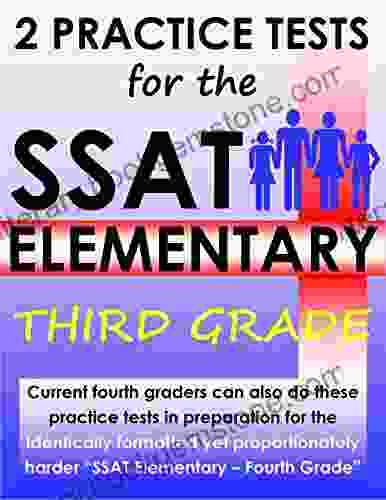
 Eugene ScottPractice Tests For The SSAT Elementary Third Grade: A Comprehensive Guide to...
Eugene ScottPractice Tests For The SSAT Elementary Third Grade: A Comprehensive Guide to...
 Fredrick CoxSummary Of The Whole Body Reset By Stephen Perrine Heidi Skolnik AARP: Your...
Fredrick CoxSummary Of The Whole Body Reset By Stephen Perrine Heidi Skolnik AARP: Your... Lucas ReedFollow ·15.1k
Lucas ReedFollow ·15.1k Dakota PowellFollow ·15.7k
Dakota PowellFollow ·15.7k Chase MorrisFollow ·17.6k
Chase MorrisFollow ·17.6k Johnny TurnerFollow ·5k
Johnny TurnerFollow ·5k Darren BlairFollow ·16.5k
Darren BlairFollow ·16.5k Rob FosterFollow ·17.3k
Rob FosterFollow ·17.3k Preston SimmonsFollow ·2.5k
Preston SimmonsFollow ·2.5k Ralph TurnerFollow ·10.2k
Ralph TurnerFollow ·10.2k
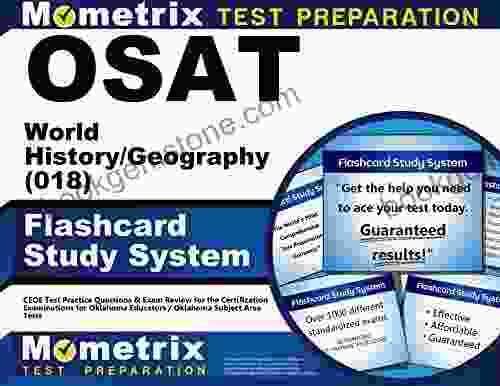
 Scott Parker
Scott ParkerCeoe Test Practice Questions Exam Review For The...
The Ceoe exam is a certification exam for...

 Jeremy Cook
Jeremy CookSpot the Difference Mazes, Math Mazes, Word Puzzles, and...
Puzzle-solving activities have...
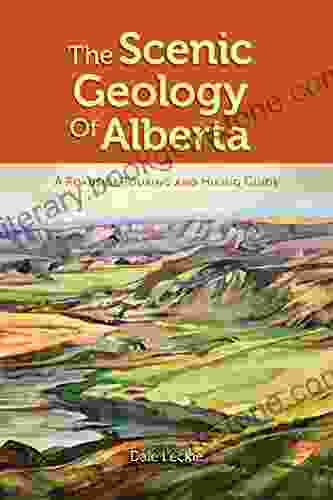
 Richard Wright
Richard WrightThe Scenic Geology Of Alberta
Alberta, a province in...

 Howard Blair
Howard BlairClaimed by the Highlander: A Journey of Love, Danger, and...
In the untamed and...
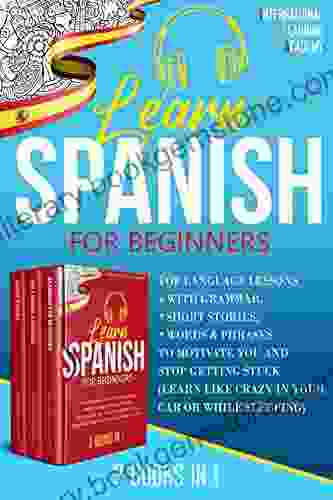
 Josh Carter
Josh CarterLearn Spanish For Beginners: A Comprehensive Guide
Embarking on the journey of learning Spanish...
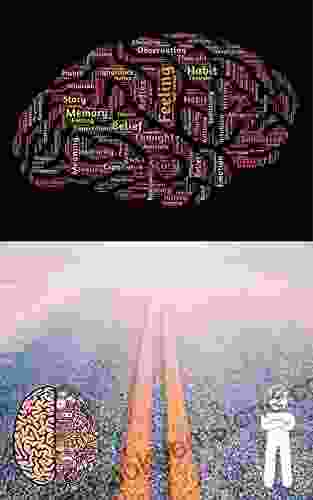
 Christian Carter
Christian CarterPowerful Wealth Generating Methods You Can Use To Make A...
Are you looking for ways to generate wealth...
4.7 out of 5
| Language | : | English |
| File size | : | 26281 KB |
| Text-to-Speech | : | Enabled |
| Screen Reader | : | Supported |
| Enhanced typesetting | : | Enabled |
| Print length | : | 432 pages |



